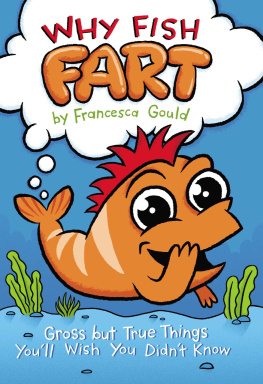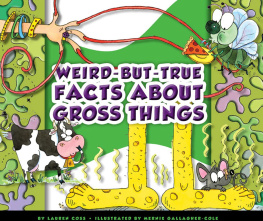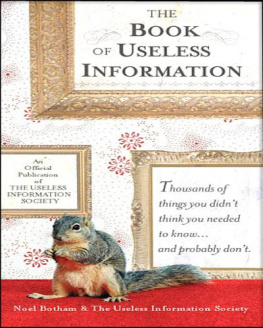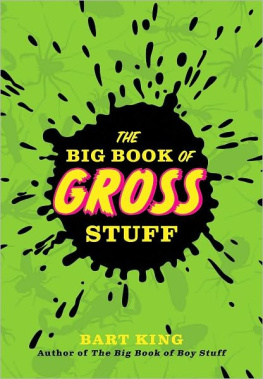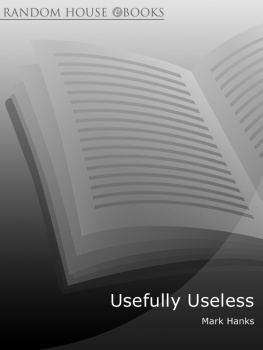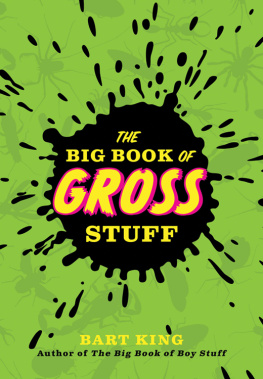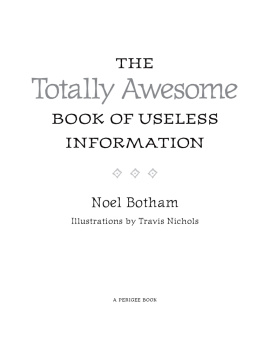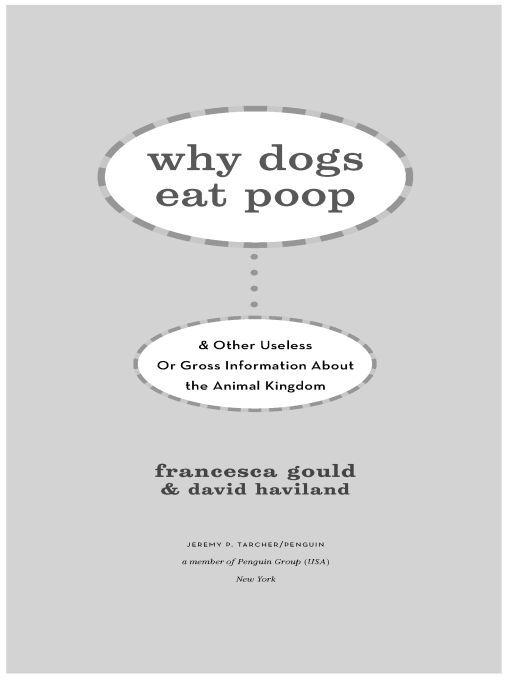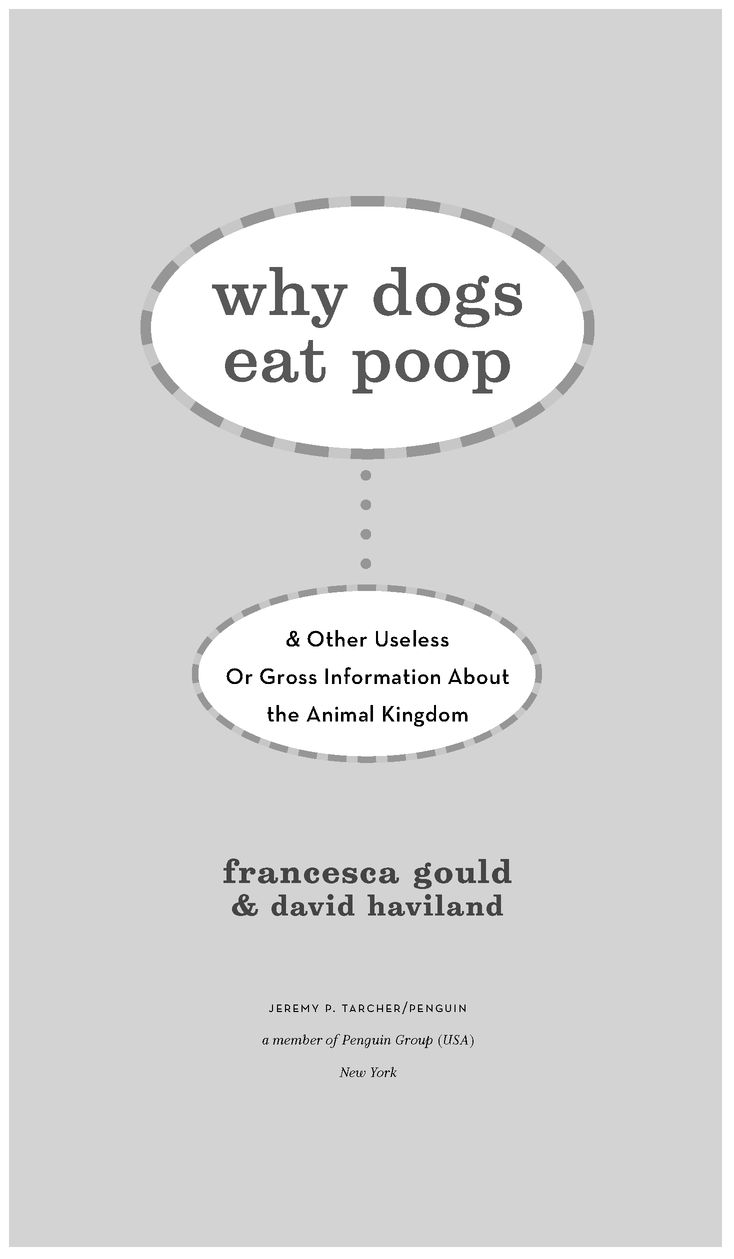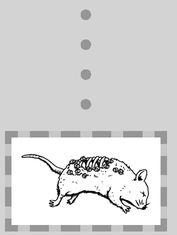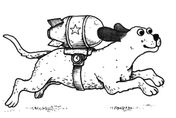Table of Contents
Other books by Francesca Gould
Why You Shouldnt Eat Your Boogers & Other Useless
Or Gross Information About Your Body
Why Fish Fart & Other Useless Or Gross
Information About the World
For Mum
chapter one
amazing animals
which octopus is an expert impressionist?
Theres a species of octopus that can mimic an incredible range of other sea life. Its a small, brown-and-white-mottled mollusk called the mimic octopus, which is about 2 feet (60 cm) long, and found in the waters around Indonesia. It can change its color and shape to resemble much of the local fauna. Many types of octopus can change color, and some are even believed to be able to mimic one single other species, but the mimic octopus is the first known animal of any kind that can morph into a number of different physical impersonations in this way.
It can mimic at least fifteen other species, including sea snakes, lionfish, flatfish, sole fish, brittle stars, giant crabs, sea stars, stingrays, flounders, jellyfish, sea anemones, and mantis shrimps. For example, it impersonates a sea snake by stuffing seven of its arms into a hole and waving the remaining one in the water. It impersonates lionfish by hovering above the ocean floor with its arms spread out, trailing from its body, just like the lionfishs poisonous fins. Its impression of a sole consists of building up speed through jet propulsion, and drawing its arms in so that its body forms a flat wedge that undulates just like the flat body of a sole.
This talent seems to be useful in two particular ways. First, the mimic octopus uses this skill to get closer to its prey. For example, it will pretend to be a female crab, so as to get closer to an amorous male crab, which it will then grab and eat. It also uses mimicry to scare off its own predators. Most of the species it mimics are poisonous, and the octopus can tailor its impressions to the intended audience, ensuring that it mimics the creature that will be most likely to discourage or scare off the predator. For example, when approached by a damselfish, a mimic octopus will suddenly appear to turn into a banded sea snake, which is a known predator of damselfish.
if you cut an earthworm in half, do you end up with two worms?
No. If you cut an earthworm in half, all you will usually end up with is two halves of a dead worm. Like most creatures, an earthworm cut in half will probably die. The only way it might survive is if the cut is made behind the thickest part of the worm, which is called the saddle, where all its major organs are found. If all these organs are retained, the worm may survive, since it should be able to regenerate a new anus. But if the cut is made anywhere in front of the saddle, the earthworm is certain to die.
There is one type of worm, though, that will form two new worms if cut in half. A planarian is a flatworm that is found in many parts of the world, in saltwater and fresh water, and on land. Amazingly, a planarian can be cut across its width or its length, and both halves will regenerate as a living worm. This is possible because flatworms have very simple body structures, with none of the complex organs that an earthworm requires to survive.
which animal has been most useful in human warfare?
Animals have played a crucial role in the conduct of warfare for thousands of years. As you might guess, horses have been the most widely used animals throughout the history of warfare. Different types of horses have been used for a number of purposes, including cavalry charges, communications, raiding, supplies, and reconnaissance. Riders have fought on horseback using weapons as diverse as bows, javelins, swords, spears, lances, rifles, and pistols.
The legendary military commander Hannibal was a keen exponent of the virtues of animal battalions. He gained a significant victory against the Romans during the Second Punic War by tying flaming torches to the horns of enormous herds of cattle, and then sending them stampeding into the enemys camp. Following this dramatic success, he decided to go even bigger, and recruited an army of elephants. The elephants were used successfully in a number of battles, but they were difficult to control, and they reacted badly to cold weather. Hannibal then famously tried to lead thirty-seven elephants across the freezing cold Alps and into Rome, but the cold was insufferable, and most of the elephants died en route. Elephants can also be extremely useful for carrying heavy loads over difficult terrain, and were even used during World War II by both Japan and the Allies.
The Romans came up with their own bizarre response to the threat of elephants, by using incendiary pigs. Pliny the Elder described a method of covering the pigs in tar, setting them alight, and sending them charging toward the enemy. The idea was that the squealing, flaming pigs would unsettle the enemys elephants and horses, causing them to flee in panic.
In South Africa in the early 1800s, something extraordinary happened at a battle between two rival chieftains. One army was marching along, when the enemy suddenly appeared as if from nowhere, rising out of the center of the Earth. In fact, they had been hiding in enormous underground tunnels, which had been built by giant earthworms.
During World War II, the American military was seriously considering using what became known as a bat bomb. The idea was to fit millions of bats with tiny bombs, and drop them in Japanese airspace. The bats would naturally scatter and find somewhere to roost, often in the eaves and rafters of the enemys homes, which tended to be built of wood. At a given time, the bombs would go off, simultaneously setting hundreds of thousands of fires. The first test run managed to burn a brand-new American airfield to the ground, however, and the idea was ditched.
In the same war, the Soviet army found a way to use dogs as antitank weapons. The dogs would be kept hungry, and trained to run under tanks to look for food. When used in the field, the dogs would have a bomb attached to them, which would be detonated by a small lever on their back. When the dog ran under the tank, this would trip the lever, detonating the bomb.
Still, the scheme was not thought to be a great success. First, the dogs had been trained using Soviet tanks, and so often it would be their own sides tanks that they would run under, and destroy, rather than those of their intended German victims. Second, the dogs were often scared by the noise and chaos of the battlefield, and so would simply run away.
Sea lions are immensely intelligent, and are often trained to perform in circuses, water parks, and zoos. Their intelligence has also been noted by the U.S. Navy, which has trained these clever animals to help protect its ships in hostile waters. The sea lions are taught to swim behind any enemy diver they spot approaching a ship, and attach a clamp to his leg. Apparently, the sea lions are so quiet and nimble, they can attach a clamp in seconds without the diver even noticing their approach. The clamp is attached to a rope, allowing sailors to pull the diver on board and interrogate him.


